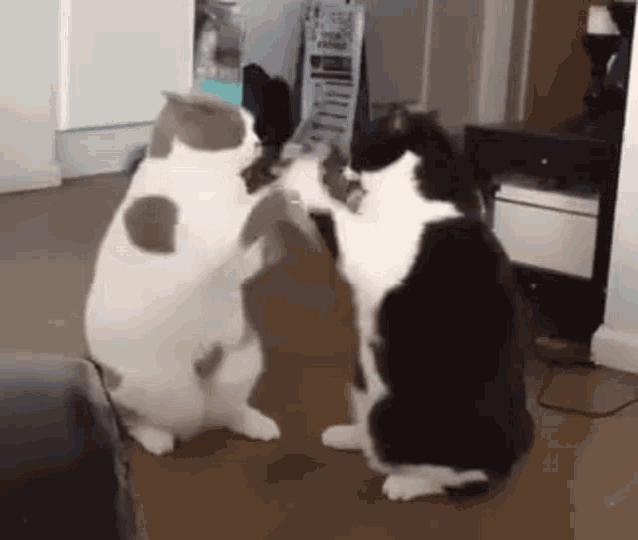Media release
From: Springer Nature1. Animals: Cat-egorising play and genuine fighting in cats
The behaviour of cat interactions has been categorised into playful, aggressive and intermediate groups that may help owners distinguish between play and genuine fighting. The study, published in Scientific Reports, suggests that cats may engage in a mixture of playful and aggressive behaviours, which could escalate into a fight if not managed by the owner.
Noema Gajdoš‑Kmecová and colleagues evaluated 105 video clips sourced from YouTube and directly from cat owners of interactions between 210 cats. Based on initial observations of the cats, the authors assembled six observable behaviour categories including wrestling, chasing and vocalisation, which they then used to assess the remaining cats. Cats were grouped based on the frequency and duration of the six behaviours. Separately, four of the authors reviewed the same videos and came up with three groups to define the interactions between cats: ‘playful’ (friendly interactions); ‘agonistic’ (aggressive interactions); or a third category, ‘intermediate’ (a mixture of both playful and aggressive behaviour).
More than a half of the cats (56.2% or 118 cats) were described by the authors as playful in their interaction, 28.6% (60 cats) were labelled as agonistic, and 15.2% (32 cats) were labelled as intermediate.
When comparing the cat behaviour groups with the three interaction groupings defined by the authors, they found that wrestling behaviour between cats was most closely associated with the playful group, while vocalization and chasing were associated with the agonistic group. The intermediate group, while observed as having characteristics of both, was more closely related to the playful group than the agonistic group. The intermediate group showed prolonged exchanges of behaviours such as laying on their back with their belly upwards, pouncing, stalking, and approaching and grooming each other.
The authors suggest that this combination of playful and aggressive behaviours may reflect a short-term disagreement in social behaviour between the cats, rather than a break-down in the relationship. The authors suggest that identifying potential tension between cats may help owners manage the relationship to avoid escalation and the need for separation.


